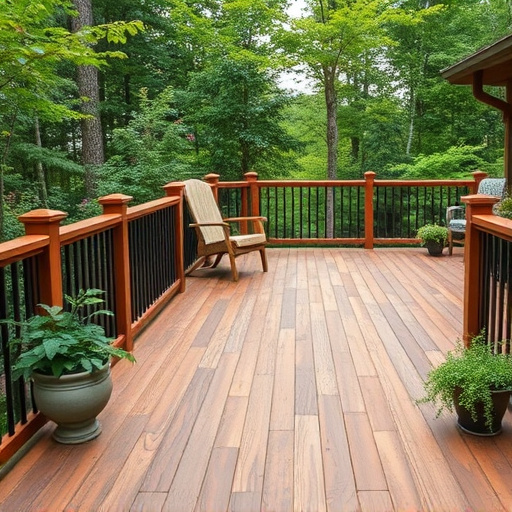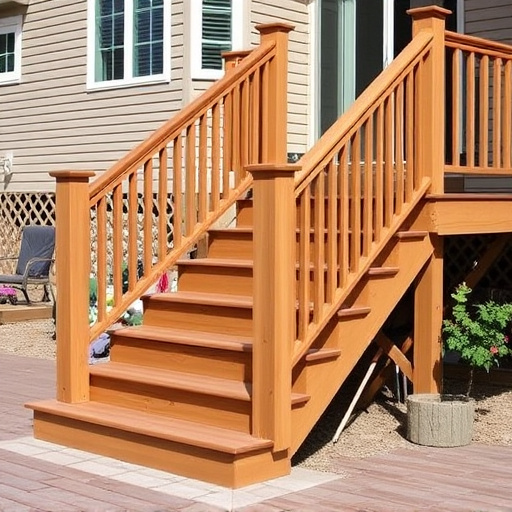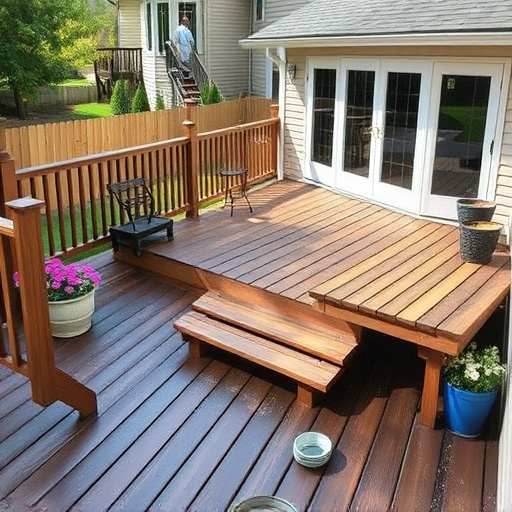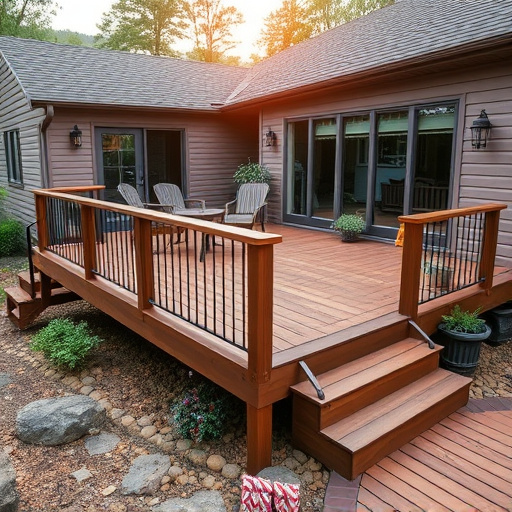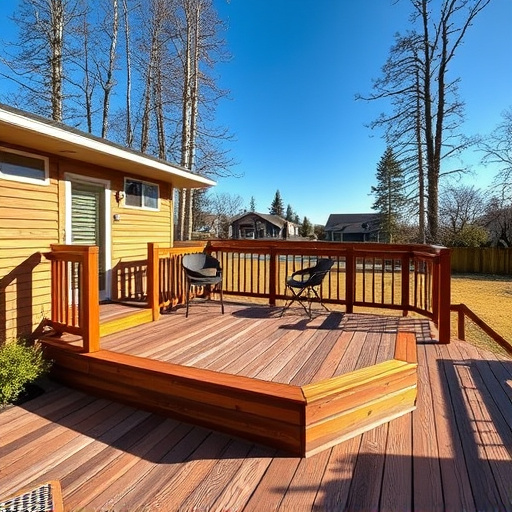Choosing the right deck foundation (concrete, wooden, or composite) is crucial for a raised deck's longevity and structural integrity. Proper site preparation, including debris removal, grading, and soil analysis, ensures a level surface. Local regulations and drainage considerations, especially in regions with extreme weather, are vital. Treated lumber or composite decking with proper drainage and waterproofing prevent moisture damage, making storm damage repair needs less frequent.
Planning a raised deck involves more than just selecting materials. A sturdy deck foundation is crucial for structural integrity, longevity, and safety. This guide delves into the essential aspects of deck foundation planning, from understanding different foundation types to site preparation and design considerations. By considering these factors, you’ll ensure your deck offers a robust, durable, and secure outdoor living space for years to come, focusing on the core elements of deck foundation.
- Understanding Deck Foundation Types
- Site Preparation and Soil Analysis
- Design Considerations for Durability
Understanding Deck Foundation Types
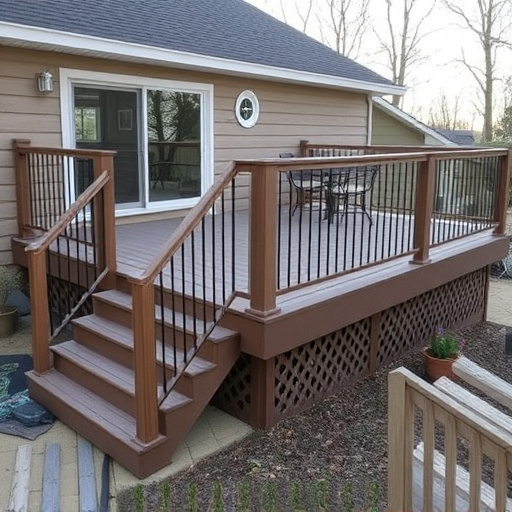
Choosing the right deck foundation is a crucial step in any raised deck project, as it forms the very base upon which your outdoor living space will be built. There are primarily three types to consider: concrete, wooden, and composite. Each has its advantages and best use cases. For instance, concrete foundations offer unparalleled strength and durability, making them ideal for larger decks or areas with heavy foot traffic. Wooden platforms, on the other hand, provide a more traditional look and feel while being cost-effective and relatively easy to install. Composite materials combine the best of both worlds, offering the aesthetic appeal of wood without the maintenance requirements.
When planning your deck, it’s also worth considering surrounding structures like your home’s exterior services, such as siding repairs or roof replacement, which may influence foundation decisions. The compatibility of new installations with existing home features is a key factor in long-term structural integrity and overall curb appeal. Proper deck foundation selection not only ensures the longevity of your outdoor space but also contributes to the overall aesthetic harmony of your property.
Site Preparation and Soil Analysis
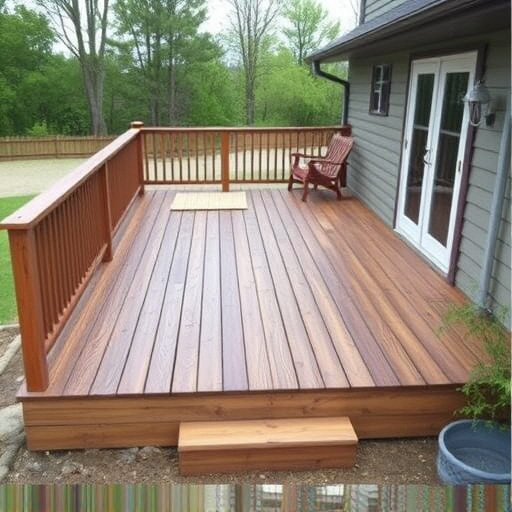
Before laying the foundation for a raised deck, meticulous site preparation is paramount. This involves clearing the area of any debris, vegetation, or obstructions that might interfere with construction. Grading the land to ensure a level surface is also crucial; a slight slope away from the structure will help with drainage and prevent water damage. Moreover, soil analysis plays a significant role in deck foundation planning. Understanding the soil’s bearing capacity and composition ensures the deck can support its intended weight.
A comprehensive site assessment should consider soil type, compaction, and potential settlement issues. Local regulations often mandate specific requirements for deck foundations, especially in areas prone to extreme weather conditions. Professional roofing services and residential roofing experts emphasize the importance of a solid base, which includes proper siding and gutters to manage water runoff, further protecting the structure from potential damage.
Design Considerations for Durability
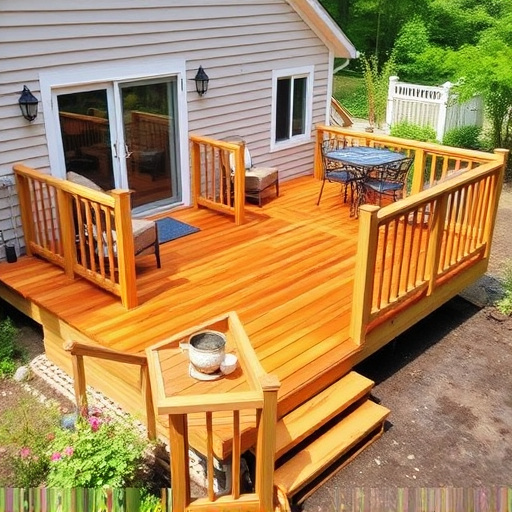
When planning a raised deck, durability should be at the forefront of design considerations. A robust deck foundation is key to preventing rot, warping, and cracks that can result from exposure to varying weather conditions and foot traffic. Choosing the right materials for your deck’s support structure – like treated lumber or composite decking – is an important step in ensuring longevity. Proper drainage and waterproofing measures should also be incorporated into the design to safeguard against moisture intrusion, a primary cause of damage not just to decks but to exterior home improvements more broadly.
Considerations for storm damage repair should factor in the deck’s placement and orientation. Decks exposed to harsh weather conditions might require additional reinforcement or a more intricate foundation system. For homeowners looking to enhance their outdoor living spaces, prioritizing these design elements can prevent costly repairs down the line, offering peace of mind and ensuring your investment in home service solutions is protected.
When planning a raised deck, choosing the right deck foundation is key. By understanding different foundation types, preparing your site with careful soil analysis, and considering design elements for durability, you’ll create a solid base that ensures your deck’s longevity. Remember, a well-planned deck foundation is the cornerstone of any successful outdoor living space.








